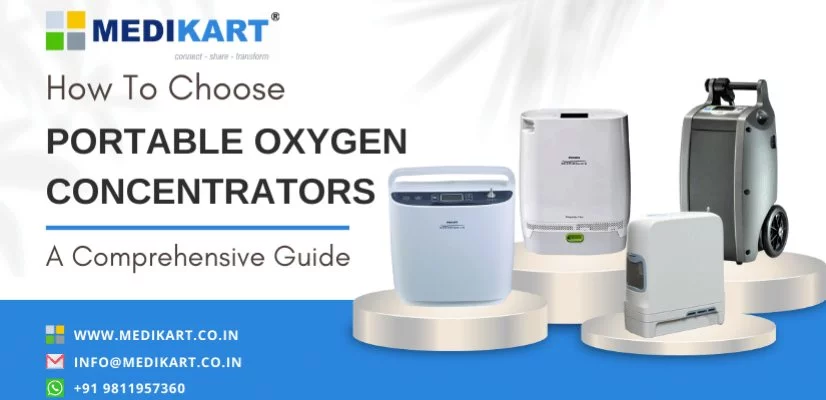Portable Oxygen Concentrators (POCs) have become a lifeline for those needing supplemental oxygen, allowing the freedom of movement and an active lifestyle. However, with a myriad of options available, making the right choice can be a bit overwhelming. This article will guide you through different aspects you need to consider while purchasing a POC, catering specifically to the needs and considerations of Indian consumers, with price references in Indian Rupees (INR).
Understanding the Modes: Pulse and Continuous
Portable oxygen concentrators come in two modes: Pulse (or demand) mode and Continuous mode.
Pulse Mode: This mode delivers oxygen only when the user inhales. It’s a power-efficient mode, ideal for users who require oxygen therapy while at rest or sleeping. An example of a pulse mode POC is the Philips SimplyGo Mini, which is lightweight and compact, making it ideal for travel.
Continuous Mode: This mode provides a steady stream of oxygen, irrespective of the patient’s breathing pattern. While they’re suitable for those with high oxygen needs, they generally consume more battery life. The Oxlife Independence Portable Oxygen Concentrator is a good example of a continuous mode POC with a long battery life.
Some POCs offer both pulse and continuous modes, allowing users to switch between modes based on their needs. An example of such a device is the Inogen One G5 Portable Oxygen Concentrator, which offers both modes and has a long battery life.
The Weight Aspect
The weight of the POC is critical. Lightweight models, ranging from 2.5 to 9 kilograms, are more convenient, especially for those who travel frequently or are active. The Philips Respironics SimplyGo Mini is an example of a lightweight model, weighing only 2.3 kg.
Battery Life and Charging Time
Battery life is an important factor when choosing a POC. If you plan to use your POC for extended periods, look for a model with a long battery life. The Inogen One G5 Portable Oxygen Concentrator offers up to 6.5 hours of battery life, providing a reliable option for those requiring longer usage times. Additionally, the Simpligo mini also provides 8 hours of power backup for battery life, making it an excellent choice for extended usage periods.
FAA Approval and Air Travel
If you travel by air, choose a POC approved by the Federal Aviation Administration (FAA). Most modern POCs are FAA-approved, but it’s always good to confirm. The Philips Respironics SimplyGo is an FAA-approved POC, making it suitable for air travel.
Emergency Aspect
For emergencies, consider a POC with an alarm system that alerts you when there’s a change in oxygen levels, battery life, or system functionality. Some models also have a built-in backup battery system for added safety.
The Cost Aspect
POCs can range from 1.40 lakhs to over 2.60 lakhs INR, depending on the brand and features. Although cost is a significant factor, it should not compromise the quality or the medical requirements of the user. Consider the long-term benefits, durability, and warranty of the device when making your investment. Also, check if your insurance covers the cost of a POC.
Service and Maintenance
Lastly, consider the after-sales service and maintenance the company offers. Most known suppliers, like Philips, have their service centres in all prime locations in India. A good service network is essential for timely repairs and maintenance. Look for companies that offer good warranty periods and have a reputation for excellent customer service. Along with this, prime channel partners, dealers, or super distributors support patients based on their capabilities, providing another layer of support and service.
Choosing a portable oxygen concentrator is a personal decision that should be based on your specific medical needs, lifestyle, and preferences. By considering the modes, weight, battery life and charging time, FAA approval, emergency aspects, cost, and service aspects, you’ll be well-equipped to make an informed choice. Always consult with your healthcare provider before making any decisions regarding your oxygen therapy. With the examples provided from Medikart and the guidance in this article, you can confidently navigate the portable oxygen concentrator market to find the right device for your needs.
Disclaimer
The information provided is for general knowledge only. Consult your doctor for personalized advice and treatment. Medikart HealthCare is not liable for any actions taken based on this info.

